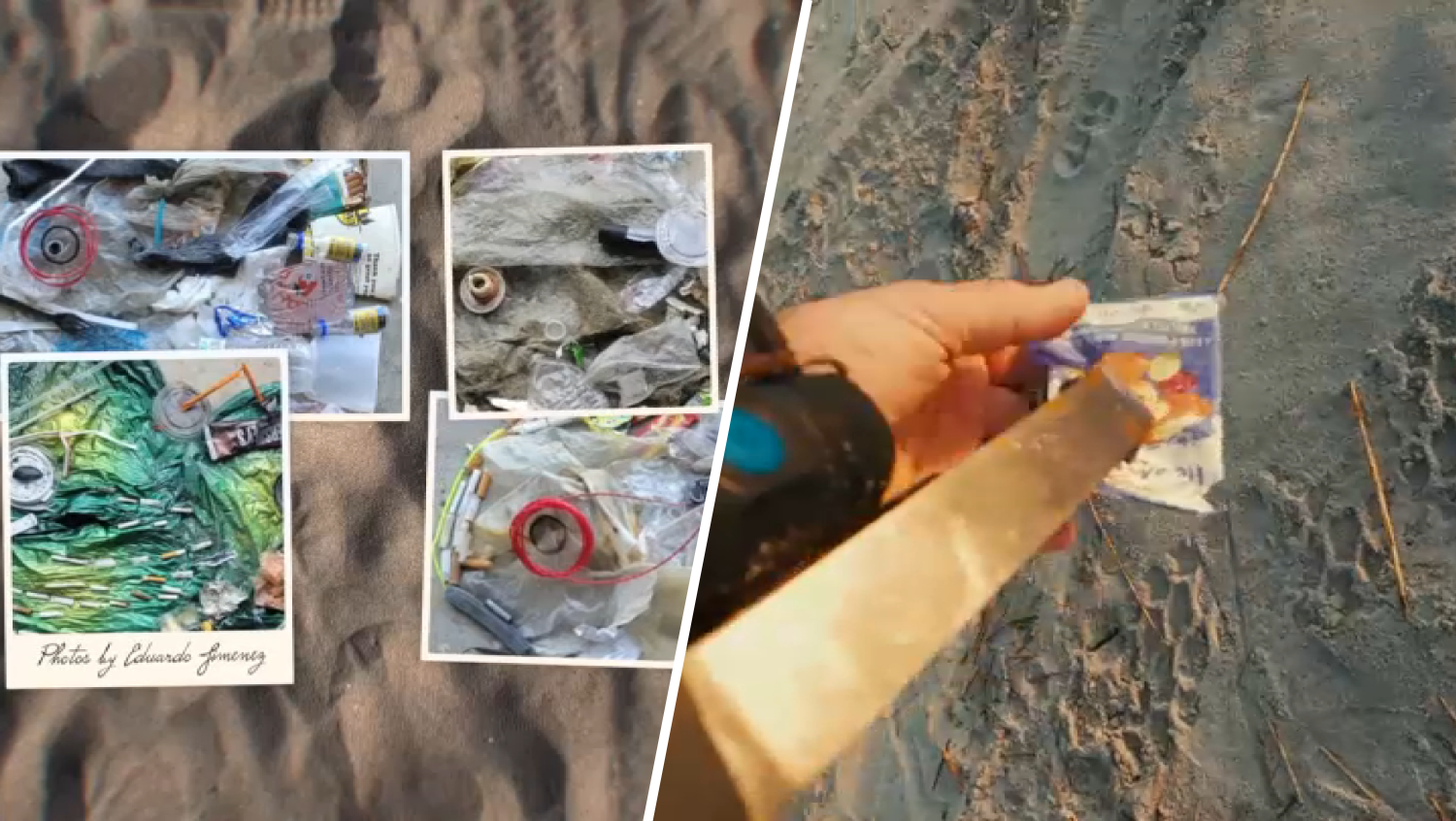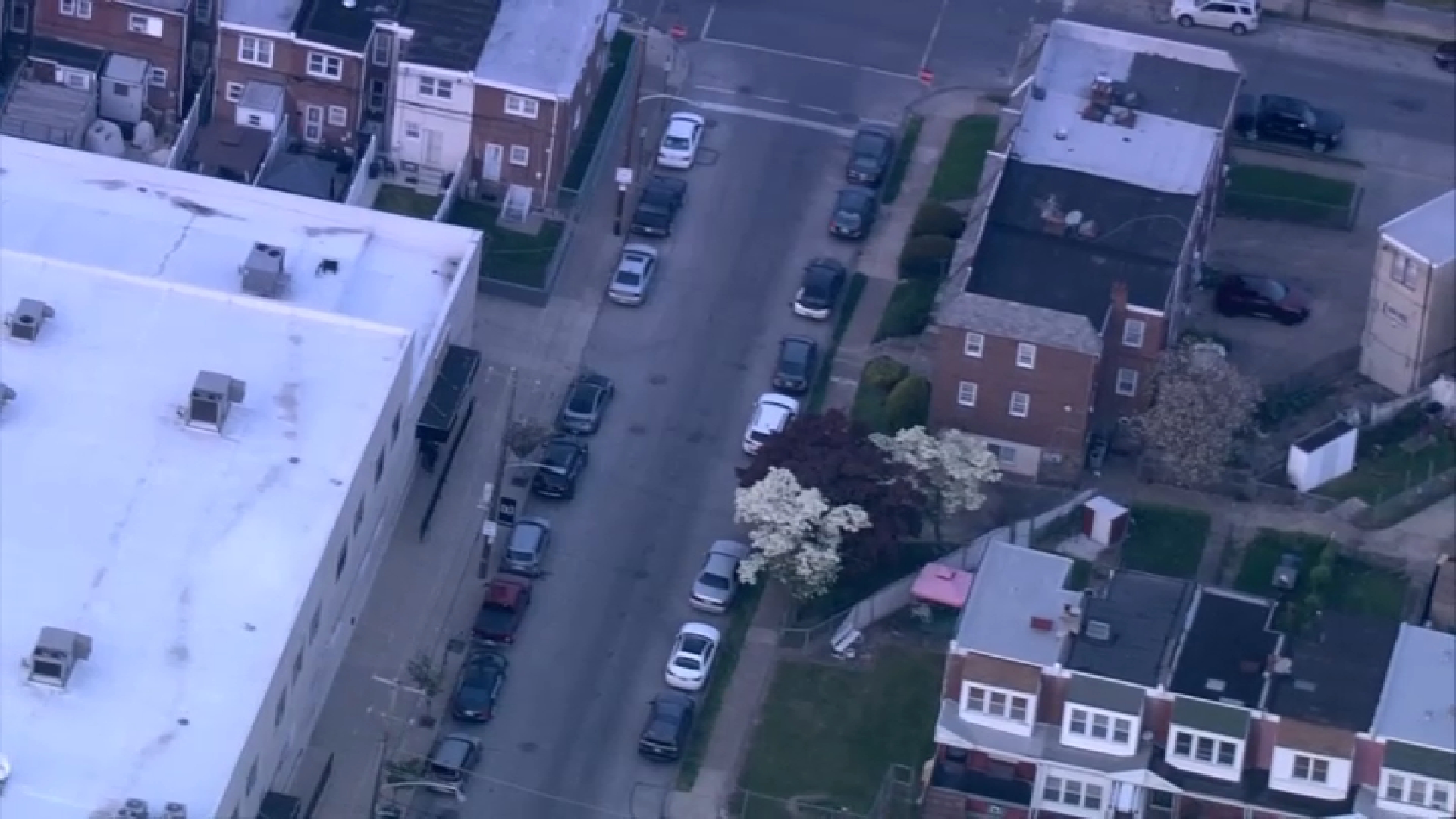WHY MILLIMETERS (AND INCHES) MATTER
In case you’ve never seen pictures like the one below, it’s the kind of thing that scares meteorologists and climate scientists alike. There is no storm-it’s even a beautiful, sunny day in Miami Beach, FL. But the streets still are flooded!
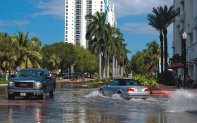
This sunny day flooding occurs often at high tide near the times of the full moon and new moon (when the water is already higher than a typical day). The biggest natural tides of the year are called “King” tides, and that is when the flooding is worst. If a storm with strong onshore winds hits at the same time as a King tide, there could be record flooding.
As overall sea level rises, each extra inch or millimeter causes flooding to get worse. Over time, the flooding happens more often, and the historically worst floods become even worse.
Miami Beach has a unique problem. The rock it sits on is the type that allows water to come to the surface from UNDERNEATH. So sea walls and other barriers can’t work. In the meantime, they’re actually trying to RAISE the roads. It’s the only option for them.
NO DOUBT-SEA LEVEL IS RISING
Unlike global temperatures that go up in a chaotic-looking pattern, sea level just keeps going up…and up…and up.
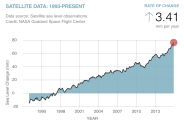
The numbers are derived from satellite observations, and it is clear to any reasonable viewer that it is going up steadily. A closer look shows that the RATE of increase is growing. A decade ago, the increase was 2 millimeters per year-now it’s more than 3. (Bad news #1)
A millimeter isn’t much of a rise. Even 3 millimeters isn’t. But eventually, it adds up. Coastal flooding happens more often, and the worst floods are worse than what used to be records. The Atlantic City increase is below:

The rise since 1900 is clear. And the average increase is more than 4 millimeters per year. In fact, much of the East Coast of the U.S. is reporting sea level rises significantly higher than most other places on earth. (Bad news #2). There are reasons that it’s worse, including the fact that the land is SINKING.
Local
Breaking news and the stories that matter to your neighborhood.
HOW DOES THIS AFFECT US?
The National Weather Service issues Coastal Flood Advisories or Warnings when the water goes high enough to cause flooding of streets and/or houses. And they’ve issued more and more of them in recent years. The NWS that covers our area in Mt. Holly, NJ actually raised the threshold for issuing coastal flood advisories “to avoid creating warning fatigue”. Eventually, one will be issued every time we have a high tide. That is, unless they keep raising the threshold.
A recent study showed an estimate of 30 days of coastal flooding in Atlantic City in our current climate. By 2030, that number would increase to about 100 days. And by 2050, it’s up to 250 days. That’s about FIVE DAYS PER WEEK! And we’re only talking about 33 years from now. A lot of us will still be around by that time. And surely, most of our children will be around, too.
The same study showed Cape May having around 320 days of at least minor coastal flooding by 2050, with Lewes, Delaware getting 225 days. And even in Philadelphia, it’s around 220 days. This means we’ll often be seeing flooding even on sunny days, just like Miami Beach is getting currently.
WHY IS SEA LEVEL RISING?
There is more than one cause of sea level rise. And as we’ve mentioned above, it doesn’t happen equally across the globe.
WARMING OCEANS-It’s called “thermal expansion”, and it is basic physics. As water warms, it expands. In the case of the ocean, it rises. It turns out that most of the carbon dioxide that is absorbed by the earth happens in the oceans. And the ocean heat has increased at a faster rate in the past 25 years or so. Ice melt in the Arctic means water replaces the ice, which raises the temperature in that part of the world, too.

MELTING GLACIERS-while icebergs and floating arctic ice do NOT affect sea level rise (the same way a melted ice cube doesn’t raise the water level in a glass), melting glaciers do. You’ve probably seen some of the amazing pictures.
The above is just one of dozens of examples all over the world. The melted ice sends water into the oceans and helps raise sea levels.
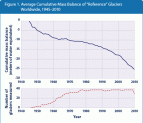
ICE MELT IN GREENLAND AND ANTARCTICA- This is the biggest area of uncertainty in determining how much sea level will rise in the future. How much ice will melt in Greenland and Antarctica? There is plenty melting already, but it is a very complex process, and we’re talking about unbelievably large amounts of potential ice melt.
So far, Greenland has been the biggest problem. The ice there isn’t melting slowly-or uniformly. There are huge variations from year to year, based on local weather patterns. But take a look at the two images below:
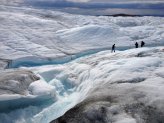
Including people in the image shows the relative sizes involved. There are huge, raging rivers flowing on land, heading toward the ocean, eventually adding inch by inch to sea level rise.
The bottom picture not only shows the large rivers, but look at the color of the ice. It’s not white! A darker surface absorbs more heat from the sun than a purely white ice sheet would. And absorbing more heat leads to more warming-which melts more ice-which leads to more warming-which melts more ice-and on, and on, and on…..As long as temperatures rise, more melting will occur, and sea level will rise some more.

In Antarctica, it’s the western part that is the problem. While the Eastern Antarctica area is seemingly stable, the west is not. The site below (from NASA) shows beautifully how the mass of ice has changed in recent years.
ADDING IT UP
Sea level doesn’t rise rapidly, but it is rising more quickly than in the past. The warming of the oceans, glaciers melting, and the Greenland/Antarctica melt are the main culprits. And it is the increase of greenhouse gases like carbon dioxide that do it. It’s not going to be a gradual thing in the future, due to those “warm, melt, warm, melt” combinations that are called “positive feedbacks”. They will cause sea level to rise faster.
Here is the most recent prediction from the IPCC (the gigantic United Nations project “to provide the world with an objective, scientific view of climate change”. Their early reports were considered way too conservative by many climate scientists, and, as expected, their recent projection (in 2013) was about 60% higher than the previous one.
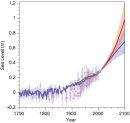
The lower projections in blue represent what is expected with a slowing down of emissions of carbon dioxide and other greenhouse gases. The red area is a projection of a higher emissions scenario. That would lead to about a one meter sea level rise (3.3 feet). Even the lower scenario would be about 0.7 meters (2.3 feet).
Remember, the sinking land makes it worse, so those numbers would be significantly higher along the coast in our area.
If the above numbers aren’t bad enough, scores of climate scientists who cover sea level rise were recently surveyed. Their conclusion: if the IPCC numbers are going to be off, it will likely be that they are still UNDERESTIMATING future sea level rise.
Like the title of the blog said: "Big trouble."

